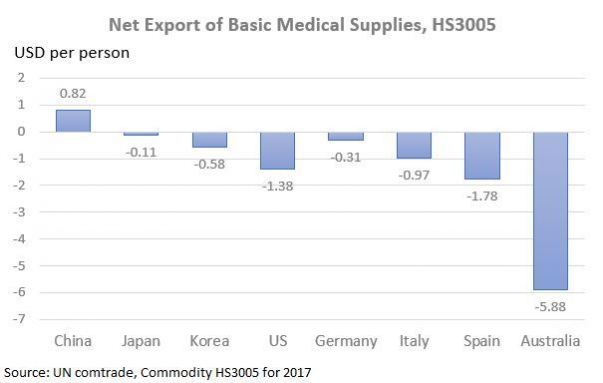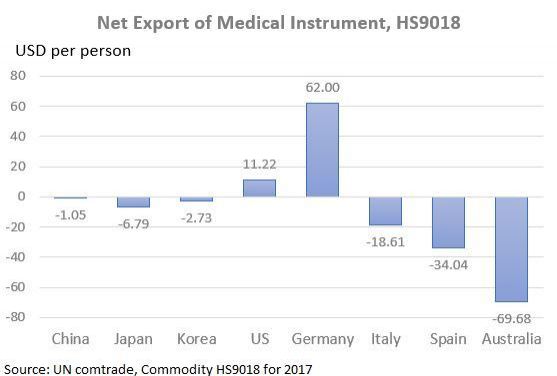IO EconOMICS
Input-OUTPUT ANALYSIS AT YOUR FINGERTIPS
the structure of the world economy is changing rapidly and becoming ever more complex
Our mission is to build partnerships with clients and help unravel the interactions between production, investment, consumption and trade by providing up-to-date, technology-led data in consistent with input-output theories.
We live in a world with all economies and industries interconnected. There is little doubt that the structure of economies around us are changing rapidly and becoming more complex. Interconnected data, such as input-output data, is the most needed information for economists today to measure impacts of economic events.
LATEST NEWS
22 March 2020
Trade data from United Nations (UN Comtrade) shows that Australia relies heaviest on imports of medical supplies among developed nations.
In terms of US dollars per person, Australia imported net US$5.88 per person for wadding, gauze, bandages (dressings, adhesive plasters, poultices), impregnated or coated with pharmaceutical substances or in forms or packings for retail sale, for medical, surgical or veterinary use (UN Commodity HS3005) and net US$69.68 per person for instruments and appliances used in medical, surgical, dental or veterinary sciences, including scintigraphic apparatus, other electro-medical apparatus and sight testing instruments (UN Commodity HS9018) in 2017.
Australia's net imports of medical supplies per person is higher than that in Italy and Spain. It is not just on the lower value-added medical products (HS3005), but also on the higher value-added medical products (HS9018). The policy of heavily relying on foreign countries for our medical supplies may make a difference to the outcome of COVID-19 outbreak.


18 March 2020
Our latest 2018-19 Australian Input-Output Table (direct allocation of imports) shows that a recession in Australia is inevitable. In 2018-19, the air tranport industry contributed about $9.7 billion to our economy while the accommodation, cafes and restaurants industry contributed about $47 billion. A 80 per cent down in air traffic and a 20% down in accommodation and cafe business is already enough to put Australia into technical recession for six months, even all other industries could grow 2% during the same period.
1 December 2019
Our Australia's Input-Output Table for 2018-19 has been updated using the latest ABS and industry data. A version for CGE models is also completed. The following 20 industries are represented in our basic version of the 2018-19 input-output table.
1. Agriculture, Forestry & Fishing
2. Mining
3. Manufacturing
4. Electricity, Gas & Water
5. Construction
6. Wholesale trade
7. Retail trade
8. Accommodation, cafes & restaurants
9. Transport & storage
10. Communications
11. Finance and Insurance
12. Rental, hiring and real estate
13.Professional, scientific and technical services
14. Administrative and support services
15. Public administration and safety
16. Education
17.Health & community services
18. Arts and recreational services
19. Personal & other services
20. Dwelling
